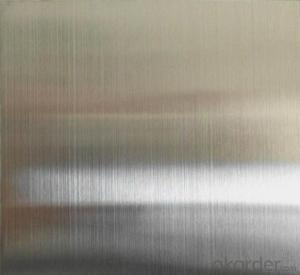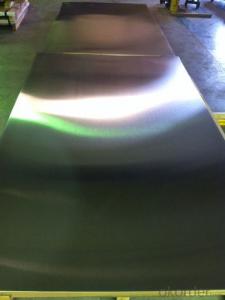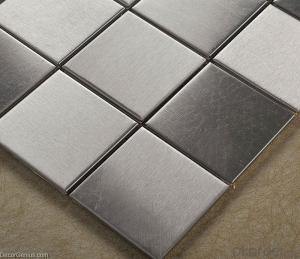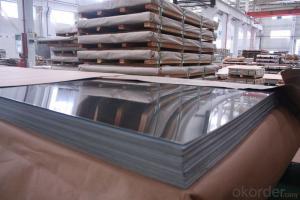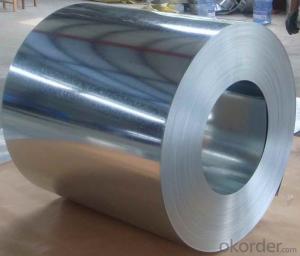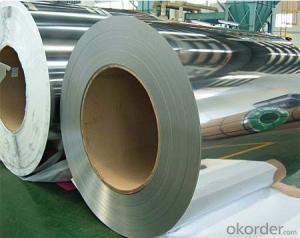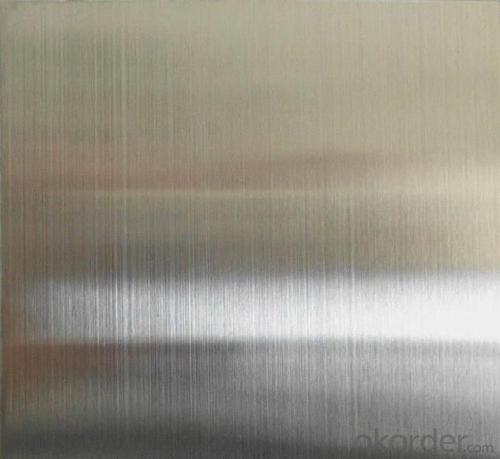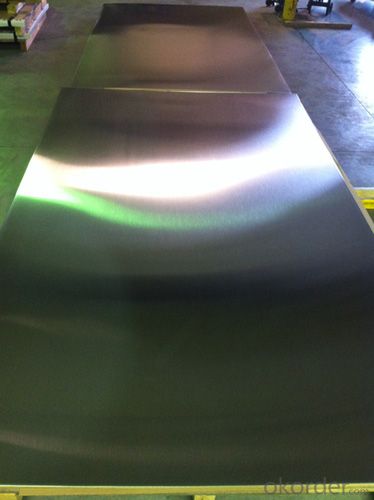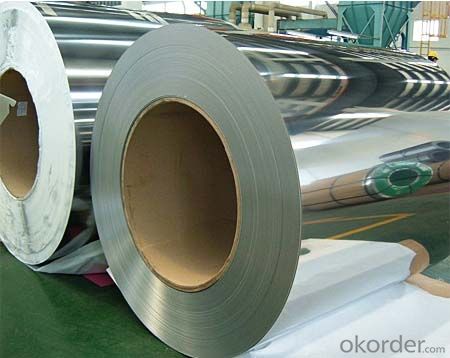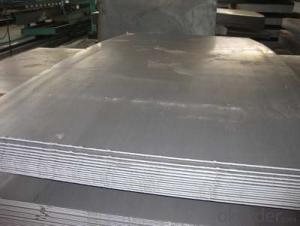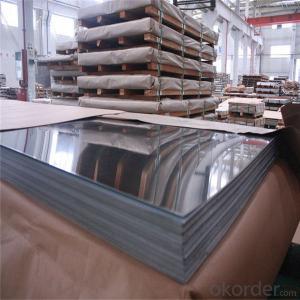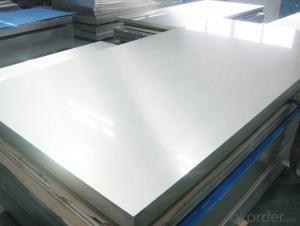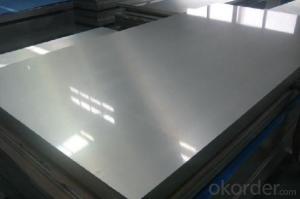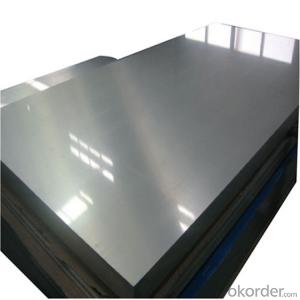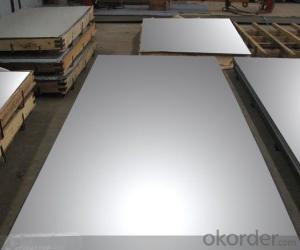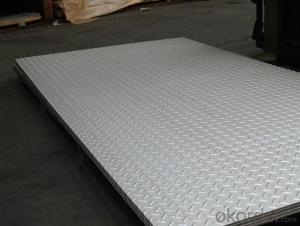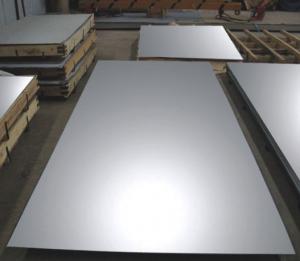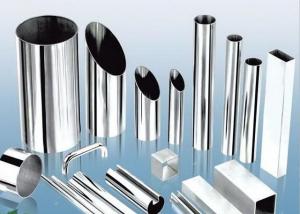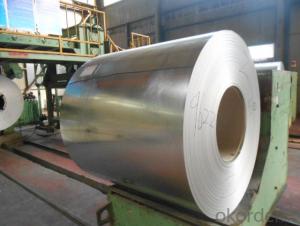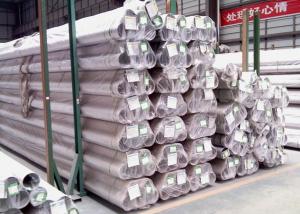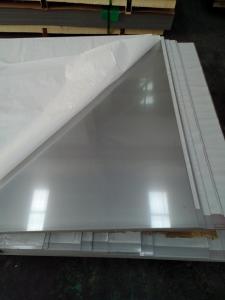Stainless Steel Sheet 430 for Foodstuff, Biology, Petroleum, Nuclear Energy Medical Equipment
- Loading Port:
- Shanghai
- Payment Terms:
- TT OR LC
- Min Order Qty:
- 1 m.t.
- Supply Capability:
- 20000 m.t./month
OKorder Service Pledge
OKorder Financial Service
You Might Also Like
Specification
Stainless Steel Sheet 430 for Foodstuff, Biology, Petroleum, Nuclear Energy Medical Equipment
Packaging Details:Wooden pallets,water proof paper-20'GP or 40'GP for stainless steel sheet.
Delivery Detail:within 5-7 days after receiving the deposit
1. Specifications about stainless steel sheet
Commodity | Professional 430 201 202 304 304l 316 316l 321 310s 309s 904l stainless steel sheet |
Grade | 201,202,304,304L,316,316L,310S,309S,321,301,310,410,420,430,904L |
Brand | TISCO ,BAOSTEEL,POSCO,JISCO,LISCO |
Certification | SGS,BV,IQI,TUV,ISO,etc |
Thickness | 0.2mm-150mm |
Width | 1000,1219,1250,1500mm, or as your requirements |
Length | 2000,2438,2500,3000,6000mm, or as your requirements |
Surface | No.1, 2B, BA, 8K Mirror, Hairline,satin, Embossed,brush,No.4,HL,matt,pvc film,laser film. |
Standard | ASTM,AISI,SUS,JIS,EN,DIN,GB, ASME,etc |
Delivery time | 5-7 days after confirming the order |
MOQ | 1 Ton |
Advantages | Showing the splendor of your quality, wearresistant as well , strong corrosion resistance and decorative effect, durable and beautiful in good taste. |
2.Production Flow about stainless steel sheet
Raw materials are sending to hot rolling units for rolling into different sizes
Hot rolled material is annealing in cold; rolled annealing furnace and pickling in acid.
All mill rolls are grinded on precision grinding machine with proper chamfering after first shiftoperation.
All sheets are pickled in different tanks and dried on brush roll machine before dispatched.
These sheets are again annealing and are sent to straighten machine for straightening.
Inspections are done at various stages. Keep proper control overall internal process via rolling,annealin and pickling by our experienced staff.
3.Surface--stainless steel sheet
| Surface Finish | Definition | Application |
| 2B | Those finished, after cold rolling, by heat treatment, pickling or other equivalent treatment and lastly by cold rolling to given appropriate luster. | Medical equipment, Food industry, Construction material, Kitchen utensils. |
BA/8K mirror | Those processed with bright heat treatment after cold rolling. | Kitchen utensils, Electric equipment, Building construction. |
| NO.3 | Those finished by polishing with No.100 to No.120 abrasives specified in JIS R6001. | Kitchen utensils, Building construction. |
| NO.4 | Those finished by polishing with No.150 to No.180 abrasives specified in JIS R6001. | Kitchen utensils, Building construction, Medical equipment. |
| Hairline | Those finished polishing so as to give continuous polishing streaks by using abrasive of suitable grain size. | Building Construction. |
| NO.1 | The surface finished by heat treatment and pickling or processes corresponding there to after hot rolling. | Chemical tank, pipe. |
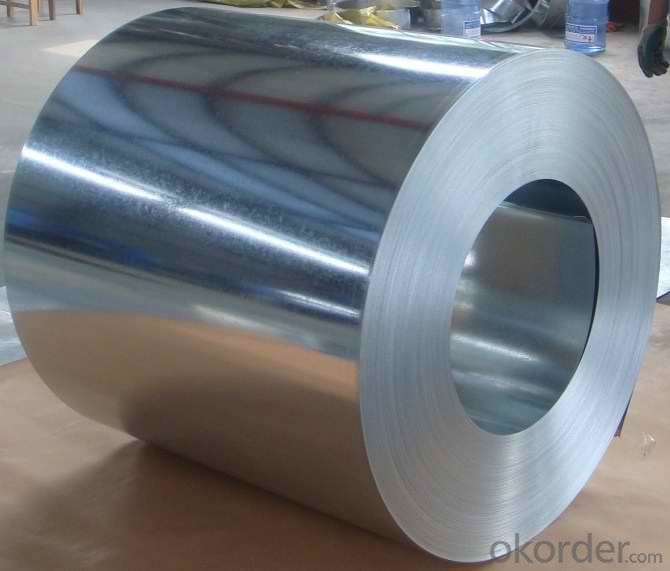
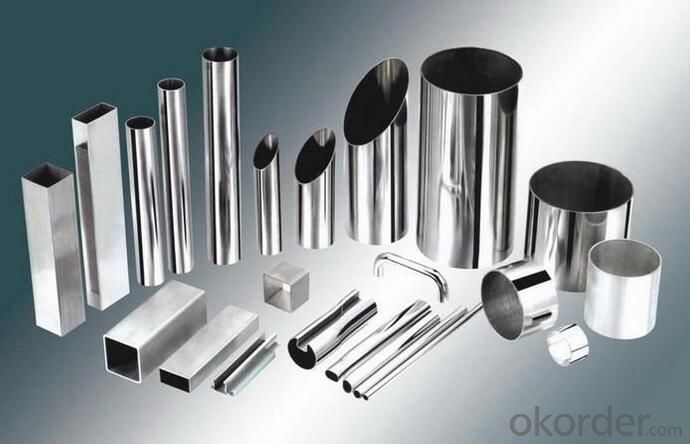
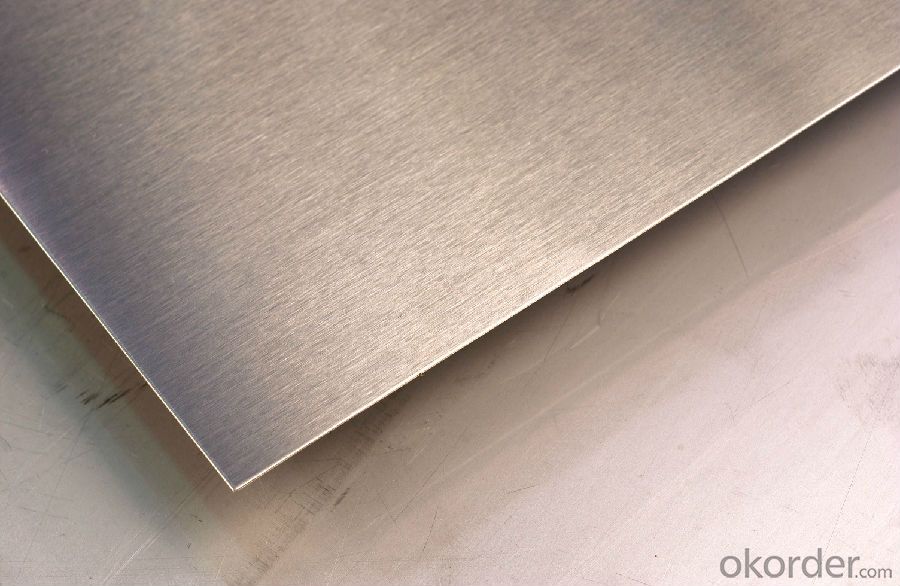
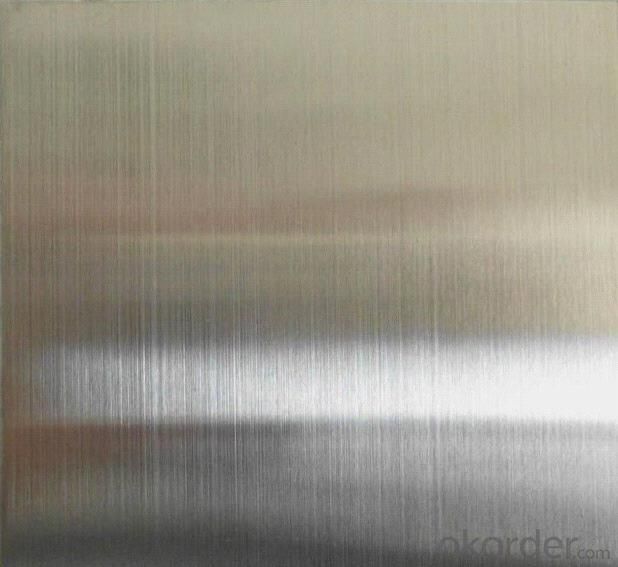
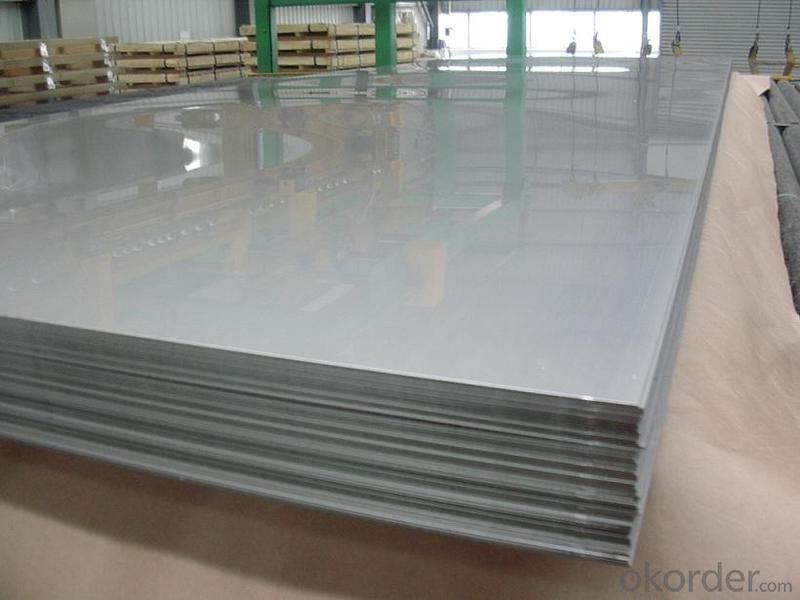
- Q: Can stainless steel sheets be used for outdoor sculptures?
- Yes, stainless steel sheets can be used for outdoor sculptures. Stainless steel is known for its durability, resistance to corrosion, and ability to withstand harsh weather conditions, making it a suitable material for outdoor sculptures that need to be exposed to the elements.
- Q: Are stainless steel sheets suitable for marine applications?
- Stainless steel sheets are indeed a great choice for marine applications. The reason lies in their remarkable resistance to corrosion, which makes them perfect for use in marine environments where exposure to saltwater and other harsh elements is common. These sheets are equipped with a protective oxide layer that prevents any rust or corrosion, ensuring their long-lasting and sturdy nature in marine applications. Moreover, stainless steel sheets possess exceptional strength and impact resistance, making them capable of enduring the severe conditions and stresses encountered in marine environments. As a result of their corrosion resistance, durability, and strength, stainless steel sheets have gained immense popularity in the marine industry.
- Q: Can stainless steel sheets be used for kitchen sinks?
- Yes, stainless steel sheets can be used for kitchen sinks. Stainless steel is a popular material choice for kitchen sinks due to its durability, corrosion resistance, and easy maintenance. Stainless steel sheets are commonly used to fabricate kitchen sinks as they can be molded into various shapes and sizes. The smooth surface of stainless steel also makes it easier to clean and maintain hygiene in the kitchen. Additionally, stainless steel sheets are resistant to heat, stains, and scratches, making them a practical choice for a kitchen sink that is exposed to daily use and potential wear and tear.
- Q: What is the typical thickness range for stainless steel sheets?
- The specific application and requirements determine the typical thickness range of stainless steel sheets. Generally, these sheets are readily available in thicknesses ranging from 0.4mm to 6mm. Thinner sheets, in the range of 0.4mm to 1mm, find common usage for decorative purposes or in applications that demand flexibility. Conversely, thicker sheets are extensively employed in structural or industrial applications that necessitate strength and durability. It is worth mentioning that these thickness ranges are not exhaustive, and customized stainless steel sheets can be fabricated to fulfill project-specific requirements.
- Q: What about black titanium stainless steel?
- What I do is teaching: first, teach you how to make black stainless steel plate with mirror stainless steel plate. Second teach you how to remove this layer of black, revealing mirror stainless steel. These two items are the main processes for making black titanium plate labels.
- Q: What are the benefits of using patterned stainless steel sheets in interior design?
- Patterned stainless steel sheets offer several benefits in interior design. Firstly, they add visual interest and uniqueness to a space, allowing for creative and innovative design possibilities. The patterns can range from subtle to bold, providing options to suit various aesthetics and design themes. Additionally, stainless steel is a durable material that is resistant to corrosion, making it ideal for high-traffic areas or spaces prone to moisture. It is also easy to clean, making maintenance hassle-free. The reflective properties of stainless steel can also help to brighten a room and create an illusion of increased space. Furthermore, patterned stainless steel sheets are versatile and can be used in various applications, such as wall coverings, backsplashes, countertops, or even furniture accents. They can be used to enhance both modern and traditional interior designs, adding a touch of sophistication and elegance. Overall, the benefits of using patterned stainless steel sheets in interior design include their aesthetic appeal, durability, ease of maintenance, versatility, and ability to enhance the overall visual appeal of a space.
- Q: How do you determine the best thickness of stainless steel sheet for a specific application?
- To determine the best thickness of stainless steel sheet for a specific application, several factors need to be considered. Firstly, the intended use of the stainless steel sheet is crucial. Different applications require different levels of strength, durability, and resistance to corrosion. For example, if the sheet will be used in a high-stress environment or exposed to harsh chemicals, a thicker gauge stainless steel sheet would be suitable to ensure sufficient strength and corrosion resistance. Secondly, the size and dimensions of the application should be taken into account. Larger structures or components may require thicker stainless steel sheets to maintain structural integrity and prevent deformation under load. Conversely, smaller or more delicate applications may benefit from thinner sheets to reduce weight and improve flexibility. Moreover, considering the expected lifespan and maintenance requirements is essential. Thicker stainless steel sheets generally offer greater longevity and can withstand more wear and tear. However, if the application requires frequent cleaning or maintenance, a thinner sheet may be more practical. Additionally, budgetary constraints should be taken into consideration. Thicker stainless steel sheets tend to be more expensive due to the increased material cost and manufacturing complexity. Balancing the desired performance with available resources is crucial to determine the most cost-effective thickness. Lastly, consulting industry standards, guidelines, and experts can provide valuable insights. Various industries have specific requirements for stainless steel sheet thickness based on their experiences and safety standards. Engaging with professionals can help to ensure the chosen thickness meets the necessary specifications and regulations. In summary, determining the best thickness of stainless steel sheet for a specific application involves considering the intended use, size, expected lifespan, maintenance requirements, budget, and seeking guidance from industry experts. By carefully evaluating these factors, one can make an informed decision to select the most suitable thickness for their particular needs.
- Q: What are the different types of stainless steel sheet finishes for industrial applications?
- In industrial applications, various types of stainless steel sheet finishes are commonly utilized. These finishes serve different purposes in terms of durability, resistance to corrosion, and aesthetics. 1. No. 1 Finish: This finish is achieved through a process of hot rolling, annealing, and pickling, resulting in a rough and dull surface. It finds its application in structural components or areas where a smooth surface is not essential. 2. No. 2B Finish: Achieved by cold rolling, annealing, and pickling, this finish offers a moderately reflective and smooth surface. It is commonly used in applications where both corrosion resistance and appearance are important, such as kitchen appliances, architectural components, and food processing equipment. 3. No. 4 Finish: This finish is obtained by polishing with abrasive belts or brushes, resulting in a matte appearance. It is often employed in applications where a decorative finish is desired, such as furniture, elevator panels, and signage. 4. No. 8 Finish: Also known as a mirror finish, this is the most reflective finish available for stainless steel sheets. It is achieved by progressively polishing with finer abrasives until a highly reflective surface is obtained. This finish is commonly used for architectural accents, automotive trims, and decorative items that require a high level of reflectivity and a pleasing appearance. 5. BA Finish: This finish is achieved through annealing in a controlled atmosphere furnace, resulting in a highly reflective and smooth surface. It is commonly used in applications where a mirror-like finish is desired, such as decorative items, reflectors, and light fixtures. These are just a few examples of the various stainless steel sheet finishes commonly employed in industrial applications. Each finish possesses unique properties and is suitable for different purposes. Therefore, it is crucial to carefully consider the specific requirements of the application when selecting a finish.
- Q: How do I prevent stress corrosion cracking on stainless steel sheets?
- To prevent stress corrosion cracking on stainless steel sheets, there are various steps that can be taken: 1. Opt for the appropriate stainless steel grade: Select a stainless steel grade that is resistant to stress corrosion cracking (SCC). Although grades like 304 and 316 generally have good SCC resistance, certain applications may necessitate higher alloyed grades like duplex or super duplex stainless steels. 2. Minimize exposure to corrosive environments: Limit the exposure of stainless steel sheets to environments known to cause stress corrosion cracking, such as chloride-rich or acidic surroundings. If avoiding exposure is not possible, consider applying protective coatings or barriers to shield the stainless steel from these corrosive elements. 3. Manage applied stress levels: Prevent subjecting the stainless steel sheets to excessive mechanical or thermal stresses. High tensile stresses can facilitate the initiation and propagation of stress corrosion cracking. Utilize appropriate design and fabrication techniques to ensure even stress distribution and minimize stress concentrations. 4. Maintain the surface condition: Ensure that the stainless steel sheets are devoid of surface contamination or defects that can serve as initiation sites for stress corrosion cracking. Regularly clean and inspect the sheets to eliminate any contaminants or corrosion products. 5. Employ inhibitors or cathodic protection: In certain cases where exposure to corrosive environments is unavoidable, the use of corrosion inhibitors or the implementation of cathodic protection techniques can help mitigate stress corrosion cracking. These methods work by reducing the corrosive activity on the stainless steel surface. 6. Handle and store properly: Exercise caution during transportation and storage to prevent excessive bending, vibration, or exposure to corrosive substances. Store stainless steel sheets in a clean and dry environment to avoid potential surface contamination. In conclusion, a combination of material selection, environmental control, stress management, surface maintenance, and proper handling can effectively prevent stress corrosion cracking on stainless steel sheets. It is advisable to consult with material experts or engineers to analyze specific application requirements and recommend the most appropriate preventive measures.
- Q: What are the common manufacturing standards for stainless steel sheets?
- There are several common manufacturing standards for stainless steel sheets that ensure their quality and consistency. One of the most widely recognized standards is the ASTM International (formerly known as the American Society for Testing and Materials) standard. ASTM A240 is the specific standard for stainless steel sheets, which specifies the requirements for chemical composition, mechanical properties, and other relevant characteristics of the material. Another important manufacturing standard is the EN (European Norm) standard, specifically EN 10088, which provides guidelines for stainless steel flat products, including sheets. This standard covers various aspects such as dimensions, tolerances, surface finishes, and more. Additionally, there are national standards developed by different countries. For example, in Japan, the Japanese Industrial Standards (JIS) classify stainless steel sheets under various specifications such as JIS G4304 and JIS G4305. These standards define the requirements for chemical composition, mechanical properties, and surface finishes of stainless steel sheets. In the United States, the American Iron and Steel Institute (AISI) also sets standards for stainless steel sheets. The AISI 300 and 400 series are commonly used in the manufacturing of stainless steel sheets, and their properties are defined by the AISI. It is important for manufacturers and suppliers to adhere to these standards to ensure that the stainless steel sheets meet the desired quality requirements and can be used reliably in various applications. These standards help maintain consistency, compatibility, and traceability in the production and use of stainless steel sheets across different industries.
Send your message to us
Stainless Steel Sheet 430 for Foodstuff, Biology, Petroleum, Nuclear Energy Medical Equipment
- Loading Port:
- Shanghai
- Payment Terms:
- TT OR LC
- Min Order Qty:
- 1 m.t.
- Supply Capability:
- 20000 m.t./month
OKorder Service Pledge
OKorder Financial Service
Similar products
Hot products
Hot Searches
Related keywords
